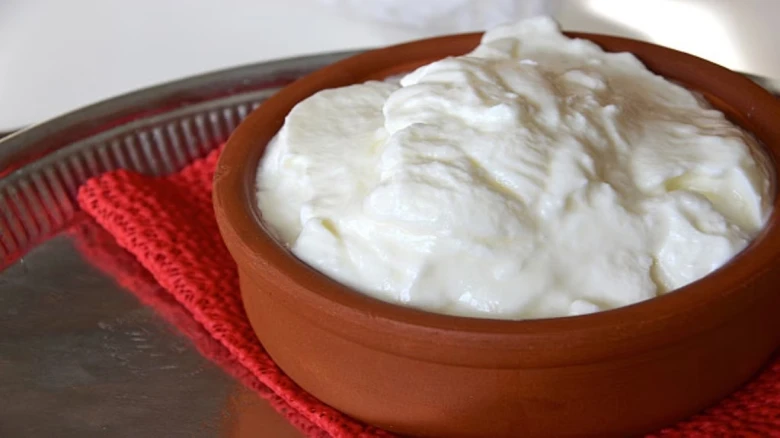Unraveling the Winter Mystery: Is Curd Beneficial or Harmful for Your Health?
Winter brings with it a conundrum for many regarding the consumption of curd. The debate surrounding whether curd is a friend or foe during the colder months has sparked discussions among individuals, with contrasting beliefs from traditional practices, nutritional perspectives, and personal preferences.
Understanding the Dilemma
Ayurveda's Perspective
In Ayurveda, there's a traditional belief that consuming curd during winter, especially at night, can lead to increased mucus formation. This belief has led many to avoid curd in winter, adhering to ancient medicinal practices.
Nutritionists' Insights
Contrary to Ayurvedic beliefs, nutritionists emphasize that curd is a nutritional powerhouse, containing probiotics, calcium, phosphorous, potassium, and other essential micronutrients. Abhilasha V, Chief Clinical Nutritionist, states, "If you enjoy curd and it suits your digestion, there's no strict reason to avoid it in winter."
https://www.hindustantimes.com/ht-img/img/2024/01/25/550x309/curd_1706188974872_1706188986774.jpg
Benefits of Consuming Curd in Winter
Probiotics for a Healthy Gut
Curd is rich in beneficial bacteria that promote a healthy gut, essential for overall well-being. Probiotics in curd can boost the immune system.
Nutrient-Rich Goodness
A source of calcium, protein, and essential nutrients, curd contributes to bone health, muscle function, and overall body function.
Versatility in Your Diet
Curd can be consumed in various forms, from plain yoghurt to flavored options or incorporated into dishes like raita, making it a versatile addition to your winter diet.
Immunity Boost
Probiotics in curd may enhance the immune system, particularly beneficial during the winter season when infections are prevalent.
Digestive Health Maintenance
The probiotics in curd help maintain a healthy balance of gut microflora, preventing issues like indigestion, bloating, and constipation.
Generates Internal Warmth
Traditional beliefs suggest that consuming curd generates internal warmth, providing comfort during colder months.
Versatility in Recipes
Curd can be incorporated into various dishes, from soups and stews to desserts, adding a creamy texture and tangy flavor.
Weight Management Support
The protein content in curd promotes a feeling of fullness, aiding in weight management by preventing overeating.
Skin Health Maintenance
Nutrients like vitamin B12 in curd contribute to maintaining healthy skin, crucial during winter when skin tends to get dry.
Healthy Addition in Pregnancy
Curd is a healthy addition to a pregnant mother’s diet, providing essential nutrients.
Potential Side Effects of Consuming Curd in Winter
Digestive Comfort
Some individuals may find consuming cold curd less comfortable for digestion. Room temperature consumption or incorporation into warm dishes might be preferable.
Preference for Warm Foods
During colder months, individuals often prefer warm foods for balanced body temperature. Warm soups, stews, or teas might be more appealing.
Personal Tolerance
Individual reactions vary. If discomfort or respiratory issues arise after consuming curd, moderation or trying different preparations may be necessary.
https://pragnews.com/postimage/2024/01/1706257889tLxChzln.webp
Setting Curd in Winter: A Nutritional Approach
Setting curd during winter requires some adjustments due to colder temperatures. Abhilasha V recommends:
Use Full-Fat Milk
Whole or full-fat milk sets curd better, providing a creamier texture.
Warm the Milk
Heat the milk just below boiling to aid in curd formation.
Cooling Temperature
Allow the milk to cool to warm but not scalding temperatures (110-115°F).
Curd Starter
Add a small amount of previous curd or yogurt with active cultures to the warm milk.
Mix Thoroughly
Ensure even distribution of the starter culture in the milk.
Insulation
Provide extra insulation during winter by wrapping the container with a thick towel or placing it in a warm spot.
Maintain Warmth
Keep a consistent warm environment for the curd-setting process, using a warm water bath or placing the container near a heat source.
Patience
Allow sufficient time for curd to set, checking periodically for the desired thickness.
Creative Ways to Consume Curd in Winter
Incorporating curd into your winter diet can be both delicious and nutritious. Here are some creative ways:
Warm Smoothies
Blend curd with seasonal fruits, honey, and spices for a comforting and nutritious warm smoothie.
Hot Soups with Curd
Enhance the flavor of hot soups by adding a dollop of curd, introducing probiotics to your meal.
Winter Raita
Prepare raita with seasonal vegetables for a refreshing and healthful side dish.
Curd Parfait
Layer curd with granola, nuts, and fruits for a satisfying and warming parfait.
Warm Curd Rice
Enjoy a comforting bowl of warm curd rice seasoned with spices for a balanced meal.
Curd-Based Dips
Create creamy dips by combining curd with herbs and spices, perfect for bread or winter vegetables.
Spiced Lassi
Blend curd with turmeric, ginger, and honey for a warming and immune-boosting beverage.
Conclusion: Embracing Curd in Winter
In conclusion, the decision to include curd in your winter diet ultimately depends on personal preferences, digestive comfort, and adherence to traditional beliefs. With its myriad health benefits, curd can be a valuable addition to your winter meals, providing both nutrition and flavor. Remember, moderation and creativity are key to enjoying curd in the colder months




Very Informative
ReplyDelete